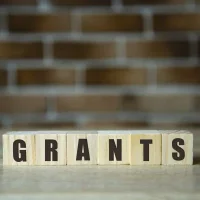Deadline: 03-May-24
The United States Agency for International Development (USAID) is seeking applications for a cooperative agreement from qualified entities to implement the USAID/KEA SBC Activity.
Activity Goals
- The USAID/KEA SBC Activity (“Activity”) will support individuals (including service providers), households, and communities to adopt and maintain the practice of priority health behaviors by
- (IR 1) identifying and addressing individual, social, and structural factors that influence priority health behaviors;
- (IR 2) increasing the availability and use of evidence for design, implementation, monitoring, evaluation, and learning;
- (IR 3) strengthening Government of Kenya (GOK) systems, structures and policies to improve coordination, collaboration, and learning for SBC interventions; and
- (IR 4) strengthening the individual, organizational, and systems level technical capacity to design, implement, and monitor SBC interventions.
Development Challenges
- Across health areas, success depends on human behavior. The ability, opportunity, and motivation of individuals (including service/health providers), households and communities to adopt and maintain the practice of priority behaviors is influenced by individual, social, and structural factors. Evidence-based, theory-informed social and behavior change (SBC) interventions increase the ability, opportunity, and motivation of individuals (including health service providers) to adopt and sustain priority behavior by addressing the internal, individual , social, and structural factors that influence those priority behaviors.
- Health Sector Challenges
- Malaria: Kenya is moving towards achieving the 2023 Malaria target of increasing utilization of appropriate malaria interventions to at least 80 percent. However, there are opportunities to address further the barriers to the increased utilization of appropriate malaria interventions using SBC.
- Family Planning and Reproductive Health: Modern Contraceptive Prevalence Rate (mCPR) in Kenya has steadily increased from 39 percent in 2008-09 to 57 percent in 2022. However, Unmet need for modern contraceptives and teenage pregnancy rates remain high at 14 percent and 15 percent, respectively, with marked geographical variations.
- Maternal, Newborn and Child Health: Kenya has made significant strides in maternal, newborn and child health (MNCH) indicators. The Kenya demographic health survey (KDHS 2020) showed a significant increase in live births assisted by skilled providers, from 41 percent in 2003 to 89 percent in 2022, vaccination coverage rate for basic antigens gradually increased from 77 percent in 2008/2009 to 80 percent in 2022, stunting levels decreased from 26 percent to 18 percent between 2014 and 2022. Under-5 mortality also declined from 115 deaths per 1,000 live births in 2003 to 41 deaths per 1,000 live births in 2022.
- Water Sanitation and Hygiene (WASH) and Menstrual Hygiene Management (MHM): Kenya has seen improvements in its WASH access rates over recent years, with water services growing at a faster pace than sanitation. According to 2019 data from the Kenya National Bureau of Statistics (KNBS), national rates of open defecation declined from 13.6 percent in 2009 to 7.4 percent in 2019, while the rates of surface water as a drinking source declined from 26.7 percent in 2009 to 24.1 percent in 2019 (KNBS, 2009 and 2019).
- HIV: On a national level, Kenya is moving closer to achieving the 2030 UNAIDS 95-95-95 targets. However, inequities among the various populations persist. For example, among children living with HIV (CLHIV), it is estimated that 74 percent know their status of which 5 only 74 percent are on treatment with viral suppression at 64 percent. High Interruptions in treatment (IIT) and sub-optimal viral suppression among certain segments and in certain counties suggest adherence challenges.
- Tuberculosis: Kenya has made significant progress in reducing the incidence of tuberculosis (TB) by steadily increasing the number of cases detected and reducing TB over the years. Despite these achievements, the country has not managed to diagnose all people with TB; 32 percent of incident TB cases were missed in 2022. This gap is even bigger among key and vulnerable populations including People living with HIV, children below 15 years and those with Drug Resistant TB.
- Global Health Security: Global Health Security (GHS) focuses on human and animal health and the environment and their interrelationships. SBC strategies in Kenya have been used to contribute to prevention, risk mitigation and response by strengthening risk communication and community engagement (RCCE).
- USAID/KEA Health SBC Activities to Date
- USAID/KEA has long supported implementation of SBC activities, both through standalone SBC mechanisms and integrated SBC and service delivery mechanisms.
- SBC Context in Kenya
- DHPE aims to strengthen national health communication and advocacy and empower communities by addressing social determinants of health, promoting positive change, and improving overall well-being. The DHPE has two divisions: a Division of Health Information, Education, and Communication (IEC) and a Division of Health Promotion and Advocacy.
- Within these sections, the DHPE has identified the following priorities:
- Policy: Finalizing health promotion strategy, finalizing revised national health promotion strategy, and finalizing development of health communication guidelines and RCCE guidelines.
- Capacity Strengthening: Developing behavior change communication training curriculum, RCCE curriculum, and human-centered design training curriculum.
- Monitoring, Evaluation and Learning: Developing a standardized tool for monitoring activity implementation, developing a system for monitoring activity implementation, and implementing monitoring approaches.
- IEC Material Development: Finalizing development IEC material development guidelines, developing an online system for storing and exchanging materials.
- Advocacy: Finalizing development of advocacy guidelines
- SBC Programming Challenges
- Despite decades of investment in SBC across health areas, progress has stalled. Programmatic challenges that may have impacted progress include siloed implementation (i.e. service delivery and SBC activities often implement alongside each other without meaningful collaboration, little to no coordination within USAID or the MOH), lack of insights or contextual understanding (i.e. a one-size fits all approach is applied from community to community without consideration for the individual, social, and structural factors that influence health behaviors), and limited innovation (i.e. continued implementation of the same communication-based interventions, such as health communication and health promotion which assume health is the main motivation for behavior change, rather than the implementation of evidence-based activities that address the range of individual, social, and structural behavioral factors).
- Health Sector Challenges
Funding Information
- USAID intends to provide up to $14,950,000 in total funding over a five-year period.
- The base amount for this award is expected to be approximately $6.25 million.
Eligibility Criteria
- Eligibility for this NOFO is restricted to Kenyan organizations.
- These eligibility requirements apply to only the principal applicant.
- Only local Kenyan organizations as defined below are eligible to be the Recipient for award. USAID defines a “local entity” as an individual, a corporation, a nonprofit organization, or another body of persons that:
- Is legally organized under the laws of; and
- Has as its principal place of business or operations in; and
- majority owned by individuals who are citizens or lawful permanent residents of; and
- Managed by a governing body the majority of who are citizens or lawful permanent residents of Kenya.
- USAID welcomes applications from organizations that have not previously received financial assistance from USAID.
- Faith-based organizations are eligible to apply for federal financial assistance on the same basis as any other organization and are subject to the protections and requirements of Federal law.
For more information, visit Grants.gov.









































